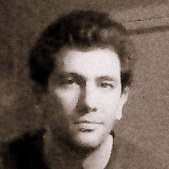
Babak Samareh
- Courses1
- Reviews5
- School: University of Toronto
- Campus: St. George Campus
- Department: Mechanical Engineering
- Email address: Join to see
- Phone: Join to see
-
Location:
Toronto, ON - Dates at University of Toronto: January 2016 - December 2016
- Office Hours: Join to see
Biography
University of Toronto St. George Campus - Mechanical Engineering
Resume
2015
NeuroBlot
Toronto
Canada Area
• Developing a memory test to detect early stages of cognitive decline. NeuroBlot scans social media accounts and creates personalized memory tasks to assess cognitive capacity based on unique content and across multiple media formats (e.g. text
images
video
audio).\n• Generating a database of anonymized information to correlate a patient’s response to different mental problems and to generate actionable insights for primary care providers and to reduce the financial burden on the healthcare system by saving doctors’ and patients’ time.\n• Selected among the top 10 companies by UTEST and MaRS Innovation for 2017 cohort.
Data Scientist
NeuroBlot
Toronto
Canada Area
• Advanced Heat and Mass Transfer\n• Heating
Ventilating
and Air Conditioning\n• Engineering Analysis
Adjunct Professor
University of Toronto
2009
Simulent Inc
Toronto
Canada Area
Senior Data Scientist
RBC
Toronto
Canada Area
Data Scientist
RBC
Toronto
Canada
• Managing projects
writing proposals
interacting with clients
preparing reports and presentations.\n• Developing a GPU based real-time fountain simulator to visualize the performance of an array of nozzles.\n• Developing a GPU based simulation tool based on Smoothed Particle Hydrodynamics (SPH) approach to model fluid sloshing in a tank.\n• Performing experiments on variety of water fountain nozzles and jets and characterizing nozzle performances.
CFD Analyst and Consultant
Simulent Inc
Toronto
Ontario
Canada
Senior Manager
Data Science | Cyber Analytics
RBC
Toronto
Canada
• Developed and expanded our 3D parallel in-house code
RIPPLE
by adding a multi-phase heat transfer module to discretise and solve a set of time-dependent and non-linear diffusion and advection partial differential equations.\n• Acquired valuable skills in high performance CPU and GPU based parallel programing. Engaged in the development and installation of a high-performance computer cluster (Splat) at the Centre for Advanced Coating Technologies.
Research Associate
University of Toronto
Toronto
Canada Area
• Support FORTUNE 500 clients
globally
and over numerous industries.\n• Performed numerical simulation and analysis
pattern prediction
and process/product optimization for several international companies including BioRad
Cinelli – Esperia
Desom Systems Incorporated
GE
ISTP Canada
US DOE
and Pratt and Whitney.\n• Developed and expanded SimSpray©
an in-house high-performance parallel program capable of simulating air-assisted spray nozzles
by adding a non-linear PDE solver to predict heat transfer from spray droplets.\n• Developed a time-dependent heat/fluid transfer model in MATLAB to predict the drying rate and generate time series for various parameters for a wet sheet of paper flying through a high-speed printer (DelphaX Canada).\n• Developed a high-performance GPU based numerical simulation tool to model fluid sloshing in fuel tanks and to predict the risk of vehicle rollover
resulting in better vehicle stability and safety.
Numerical Analyst and Engineering Consultant
Simulent Inc
Toronto
Canada Area
Software Developer for Mobile Platforms
Founder
touchDev
2008
PhD
Mechanical Engineering
Centre For Advanced Coating Technologies
University of Toronto
Dataiku DSS Certification
Dataiku
43475/L1/D22
2005
Concordia University
RBC
University of Toronto
Simulent Inc
touchDev
Montreal
Canada
• Numerical simulation of a three dimensional Cold Spray process involving particle trajectory prediction and heat transfer in supersonic gas flow.\n• CFD analysis of a high pressure Cold-Spray gun under various operating conditions
in collaboration with SIEMENS A.G. Germany.\n• Three dimensional
Volume of Fluid (VOF) based simulation and analysis of a jet engine fuel injector to improve the atomization performance
in collaboration with Pratt and Whitney
Canada.
Research Assistant
Concordia University
Persian
French
English
Glynn Williams Fellowship
University of Toronto
Ontario Graduate Scholarship (OGS)
2009 - 2012
University of Toronto Fellowship
2008 - 2012
NSERC Industrial R&D Fellowship (IRDF)
M.Sc.
Mechanical Engineering
Multiphase Flow & Thermal Spray laboratory
Concordia University
Heat Transfer
Thermodynamics
Mathematical Modeling
ANSYS
OpenGL
Fluid Mechanics
AutoCAD
Programming
Finite Element Analysis
CFD
Simulations
Matlab
Numerical Analysis
Computational Fluid Dynamics (CFD)
C++
Fortran
Mechanical Engineering
Optimization
Chemical Engineering
Modeling
Assessment of CFD Modeling via Flow Visualization in Cold Spray Process
V. Luthen
The two-phase flow properties of copper particle laden nitrogen are computationally modeled and compared with the data obtained from the experiments
determining the achievable degree of consistency between model and reality. Two common
commercial nozzles are studied. A two-way coupled Lagrangian scheme along with the RSM turbulence model is used to track the particles and to model the interactions between the gas and the particulate phase. Significant agreement is found for the geometrical gas flow structure
the resulting particle velocities
and the dependence of the two-phase flow on the particulate phase mass loading. The particle velocities decrease with increasing mass loading
even for modest powder feed rates of <3 g/s. The velocity drop occurs even when the gas flow rate is kept constant. Adiabatic gas flow models neglecting the energy consumption by the particles are thus inaccurate
except for very dilute suspensions with low technical relevance. For the cases modeled
the experiments evidence the high predictive power of the chosen CFD approach.
Assessment of CFD Modeling via Flow Visualization in Cold Spray Process
Pneumatic flow focusing technology is a relatively new atomizing process first introduced in 1998. A liquid microjet is formed by a high speed co-flowing gas stream when a pressure drop is applied across an orifice. The microjet eventually disintegrates into fine droplets by the perturbing gas downstream of the atomizer exit. Under certain controlled flow regimes the resulting spray demonstrates strong monodispersity. In the present study
the gas flow is numerically modeled by a compressible turbulent flow solver and the liquid jet evolution is captured using Volume of Fluid (VOF) interface tracking method. Jet breakup parameters and drop size distribution are studied for different liquids and flow rates. Results are in good agreement with experiments and theoretical models.
Mono-disperse spray generation by a flow focusing atomizer: A numerical study
A Three-Dimensional Analysis of the Cold Spray Process: The Effects of Substrate Location and Shape
A parallel GPU compatible Lagrangian mesh free particle solver for multiphase fluid flow based on Smoothed Particle Hydrodynamics (SPH) scheme is developed and used to capture the interface evolution during droplet impact. To solve Navier-Stokes equations
the computational domain is discretized using fluid particles. Surface tension is modeled employing the multiphase scheme of Hu et al. In order to precisely simulate the wetting phenomena
a method based on the work of Šikalo et al. is used and compared to ensure accurate dynamic contact angle calculation. Using this method
accurate perditions were obtained for droplet contact angle during equilibrium and spreading. A simple analytical model is developed to predict maximum droplet spread diameter after impact. Solver predictions agreed well to analytical results. To improve stability and performance of the solver
a customized reduction algorithm is used on the shared memory of GPU. Speedup using a variety of different memory management algorithms on GPU-CPU is studied. The proposed algorithm is validated using the Rayleigh-Taylor instability test. Droplet impact simulations are compared side by side against a Volume of Fluid (VOF) solver to ensure accuracy and robustness. GPU speed ups of up to 120 times faster than a single processor CPU were obtained. Variations of droplet spread factor and recoil height during the impact are shown to be in good agreement with experimental results.
Droplet Impact: A GPU Based Smoothed Particle Hydrodynamics (SPH) Approach
Dense Particulate Flow in a Cold Gas Dynamic Spray System
O. Stier
V. Luthen
A Combined Numerical and Experimental Analysis of the Cold Spray Process
The effect of particle-gas and particle-particle interactions in a cold spray process is studied when the particle loading is high. To examine the effect of the presence of a dense particulate flow on the supersonic gas
an Eulerian-Eulerian approach is used. It is found that when the volume fraction of the injected particles is increased
the turbulence of the gas phase will be augmented by the motion of particles and consequently
the shape
the strength
and the location of the compression and expansion waves will be altered. Shock-particle interactions are demonstrated for various volume fractions. Another important parameter
which will affect the spraying deposition efficiency
is the substrate stand-off distance. It is found that the stagnation pressure alternates for different stand-off distances because of the formation of compression and expansion waves outside the nozzle exit. The particle normal velocity on impact is a strong function of the stagnation pressure on the substrate as particles must pierce through the bow shock formed on that region. The effect of the particle size and number density are also studied for different loading conditions. It is found that small and large particles behave differently as they pass through shock diamonds and the bow shock
i.e.
in the case of very small particles
as the loading increases
the impact velocity increases
while
for the large particles
the trend is reversed.
Dense Particulate Flow in a Cold Gas Dynamic Spray System
Applying Contact Angle to a Two-Dimensional Multiphase Smoothed Particle Hydrodynamics Model
M. Yaghoubi
Two-Dimensional Numerical Simulation of the Turbulent Wind Flow Around a Large Parabolic Solar Collector
In the present study a parallel three dimensional Volume of Fluid (VOF) method is developed to simulate Marangoni convection in immiscible fluids with variable surface tension. Conservation equations are solved based on cell-averaged one-field volume tracking scheme. Evaluating the convective term in the energy equation along the boundary between the fluids highly depends on the position and orientation of the interface; hence
using average cell values simply ignores the interface shape and leads to computational uncertainty. As a remedy to this issue
the original idea behind the volume tracking method is used not only to advect mass and momentum but also energy across cells. To verify the proposed algorithm
results are compared against theoretically predicted thermocapillary migration velocity of a droplet at the limit of zero Marangoni number. However
at relatively high Marangoni numbers
thermal boundary layers are very thin and challenging to resolve. To demonstrate the capabilities of the heat transfer module
simulation of a Fluorinert droplet moving in silicon oil under applied temperature gradient is compared against the available experimental results and the migration velocity of the droplet in microgravity is reported.
Thermocapillary migration of a deformable droplet
A three-dimensional model of a Cold Gas Dynamic Spray system with a peripheral non-axisymmetric powder feeder is studied in this work. It is found that the stagnation pressure alternates for different substrate standoff distances due to the nature of the supersonic flow interaction with the substrate. One can find the optimum substrate location for any given operating condition
which results in minimum pressure buildup on the substrate. The three-dimensional analysis sheds more light on the complex gas and particle flow fields generated due to the three-dimensional particle injection process. In addition
the three-dimensional model allows us to further investigate the effect of practical substrate shapes (such as convex and concave) on the flow field and consequently to determine the optimum conditions to deposit coating particles.
A Three-Dimensional Analysis of the Cold Spray Process: The Effects of Substrate Location and Shape
L. Meteer
R. Hofmann
J. Armour
CT Science Equals Disinfection Process Improvements
J.K. Spelt
M. Papini
Kavin Kowsari
CFD-aided prediction of the shape of abrasive slurry jet micro-machined channels in sintered ceramics
Numerical simulation of a 5.33 mm droplet impacting on a 1 mm thick liquid layer of the same material
resulting in a Weber number of 426. Simulation domain consists of 4M cells
divided on 128 CPUs. Post-processed in Tecplot and rendered in Blender.
Babak
Samareh
University of Toronto
